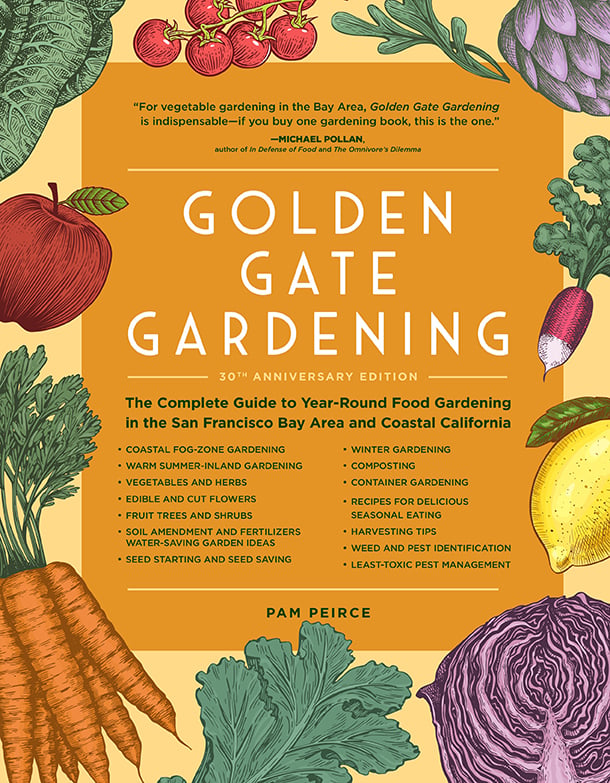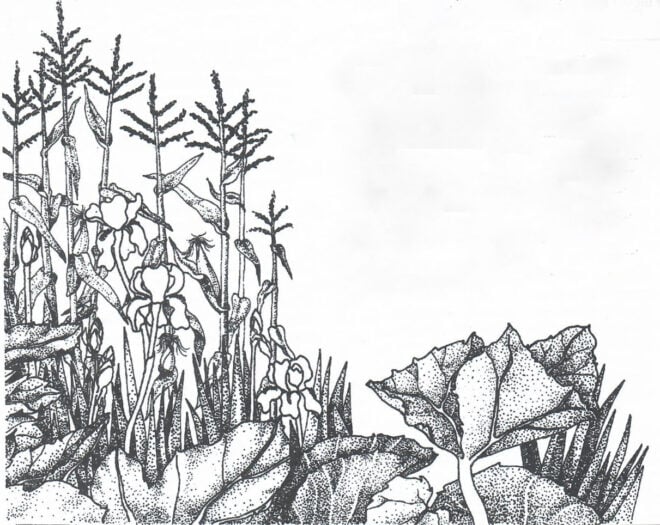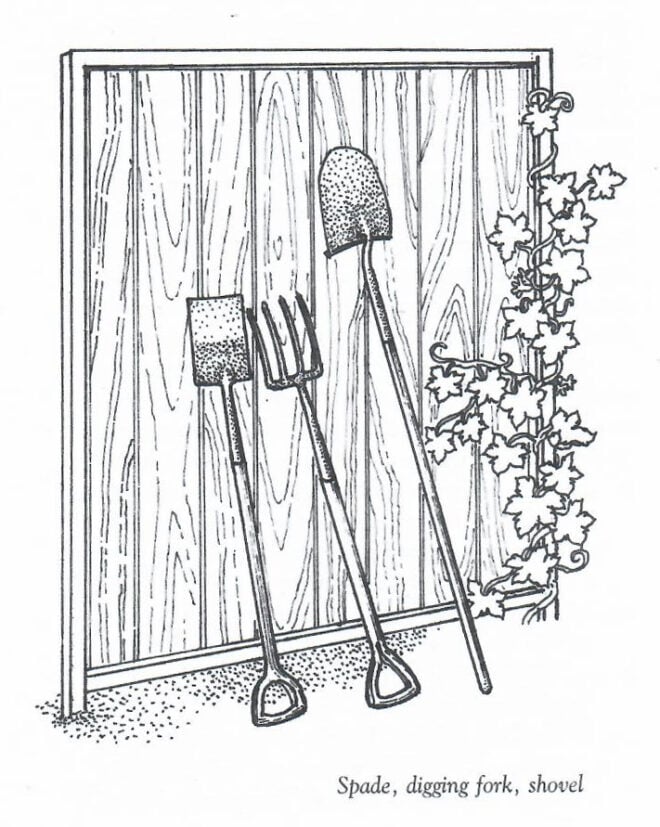
Book Review: Golden Gate Gardener – 30th Anniversary Edition
Contributor
- Topics: Plants You Need, Sustainable Gardening
Summer 2023
Edible gardeners would be lost in the fog without Golden Gate Gardening.
Like many of my fellow San Franciscans, I did not grow up with access to practical gardening knowledge or suitable space to grow my own food. When the opportunity did arrive in my mid-30s, I began a journey into urban homesteading, garden education, and now a career in botanical gardens. It started with a compost class at Garden for The Environment, our local education edible garden. It was there amongst the fog-covered veggie beds that I learned the bible of growing food in the San Francisco Bay Area was Golden Gate Gardening by Pam Peirce. Peirce’s book is, in my opinion, indisputably the authority on edibles for the home gardener in the San Francisco Bay Area.
I met Peirce at a local library talk in 2014 and asked when her next version would be released. She looked confused for a brief second and explained she had just finished this third edition in 2010. As I started to grow food in my foggy backyard, dreams of beefsteak tomatoes in a cherry tomato world helped me understand the time that went into trialing and researching this book. It is with great excitement that 13 years later, Peirce has released a new, increasingly relevant guide for growing edibles in the Bay Area.
This 30th Anniversary Edition expands its advice for gardeners inland, explores new edible cultivars suitable for our changing climate, and updates with new tools and techniques for sustainable gardening.

Golden Gate Gardening offers detailed explanations of our distinct mediterranean climate along the coast of California and accompanies practical advice on gardening for these regions. The Bay Area’s dry summers, typically frost-free winters, blanketed by our world-famous fog (affectionately called Karl) create opportunities for yearlong edible gardening. While the focus is on coastal regions of the San Francisco Bay Area, it can also apply as far north as Mendocino Coast and the Monterey Peninsula.
This book begins with a comprehensive introduction to basic garden principles. Peirce walks you through considerations for planning, crop management, and limitations based on your location in the Bay Area. She devotes chapters and updated references on how to source and grow local and organic plants and seeds, alongside managing common pests, diseases, and weeds. Peirce offers lovely anecdotes about growing food in our region and shares advice from local horticultural experts and home gardeners. Many local gardeners may tell you that her detailed planting calendars and charts are indispensable when planning your yearlong garden! Charts are broken into microclimates from foggier to sunnier, with an appendix that includes her updated inland planting calendars for regions such Santa Clara and Contra Costa counties. I have used her planting guides for edibles, flowers, and herbs for over 10 years and they have proven to be accurate and approachable for new and experienced gardeners alike.

The heart of her book is found in its catalog of vegetables from A to Z which now include new varieties from her previous editions. I appreciate that Peirce describes many “unusual crops” that are, in reality, the heritage garden crops for the Black, Indigenous, and people of color communities which make up the Bay Area. In each new education, this book becomes more culturally relatable for the diverse garden community in the Bay Area. There is an updated section for herb growing, edible and ornamental flowers, and the backyard orchardist. All chapters include a review of new cultivars which show more pest and disease resistance for our region.
Peirce also expands our understanding about the influences of climate change, referred to as global warming in previous editions. While I would have preferred to see this critical information included in the main chapters of the book, Appendix I comprehensively covers frequently asked questions about our changing climate and weather patterns. All questions and answers use common language with clear scientific explanations. This edition has expanded information about air quality, which is relevant with the increasing frequency and impacts of California’s wildfires. Peirce explains how global patterns affect local growing and takes a proactive narrative with home gardeners, encouraging both personal and political agency in reducing carbon emissions.


Lastly make sure to read Peirce’s Philosophy for Gardeners in “About this New Edition.” Growing food has never been more urgent and necessary for humankind, but Peirce doesn’t use this space to address the agriculture industry or systemic food insecurity. Peirce instead writes about edible gardening as a means to engage in an anti-consumerist lifestyle, to maintain the connections and value of plants to the human diet, to share with community, and as a medium for continual awareness about the integral relationship we have with biodiversity and nature. My journey in edible gardening has been filled with joy, paired with lessons on patience and resilience. Ten-plus years later, I still refer to Golden Gate Gardening as my compass and inspiration for edible organic gardening, and I hope you will too.
Review by: Dr. Jamie Chan, Director of Programs and Partnerships at the Gardens of Golden Gate Park in San Francisco, California









Responses